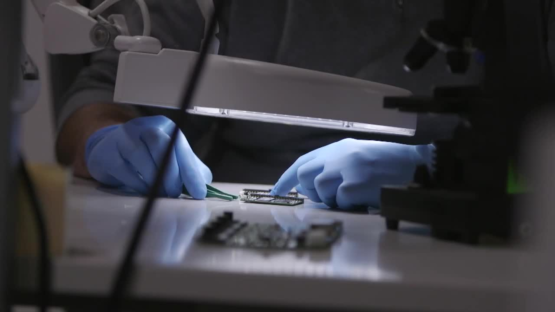Paul Norbury, CEO, Cardwave
Flash memory has a role in much of the technology we use, and design engineers need a good understanding of its capabilities to select the optimum solution. Understanding why they need a particular specification will also help them make a strong procurement case.
Embedded or removable?
Embedded flash gives engineers complete control of the memory in their product, including over how data is read from and written to the storage: they can even design their own interface and in doing so greatly improve device performance.
Embedded flash tends to be smaller than removable, so devices can be smaller. It is also easier for a company to hide its code effectively and hence protect intellectual property. However, if embedded memory fails, the entire device may be rendered unusable. Integrating embedded storage also adds significantly to development time and cost.
Removable memory makes it easier to upgrade a product and add new features, potentially increasing longevity. Data can be taken to a new device, which may appeal to users, and can be secured through on-card encryption. Retailers may be more interested in stocking a product with removable memory as they can upsell memory cards as accessories. However, a user may choose an under-specified card, perhaps because it is lower cost, and could experience slowness or malfunction as a result.
Size does matter
Different shapes and sizes (form factors) of flash memory are available. While the industry increasingly supports universal form factors, there are also some proprietary ones. The most common form factors for removable storage are SD and microSD. Common form factors for embedded storage include PCIe, eMMC and mSATA.
Sprinter or long-distance runner?
Flash memory offers a range of speeds, and increasing speed may open up new abilities. For example, using memory with faster data transfer in the Raspberry Pi could open up new programming opportunities.
Desired longevity also influences choice. Every time data is written to or erased from the memory there is a small amount of wear. There are different techniques to help minimise this, but typically consumer grade cards have the least protection and so the shortest lifespan. If product lifespan is short, there are few read/write demands, or endurance isn’t a consideration, consumer grade cards may be fine. But a broken card, especially embedded memory, can mean a broken product, so it is important to get the cost/longevity balance right.
Understanding operating environment
For many products, temperature tolerance is crucial. Even automotive applications have to handle temperatures ranging from below freezing to summer heat in the Middle East, and the memory has to work instantly when the engine is switched on, and withstand the equivalent to a power cut each time the engine is started or stopped. The same principles apply to humidity, dusty environments and where there is continuous vibration.
What level of technical and engineering support is available to me?
An engineer has to specify a product that can actually be built within the required timeframe and budget, ensuring that any additional design and manufacturing support is available. By obtaining advice from a specialist with an in-depth understanding of what is available, designers can push the boundaries and achieve the optimum balance of cost and performance.
For more information visit www.cardwave.com










